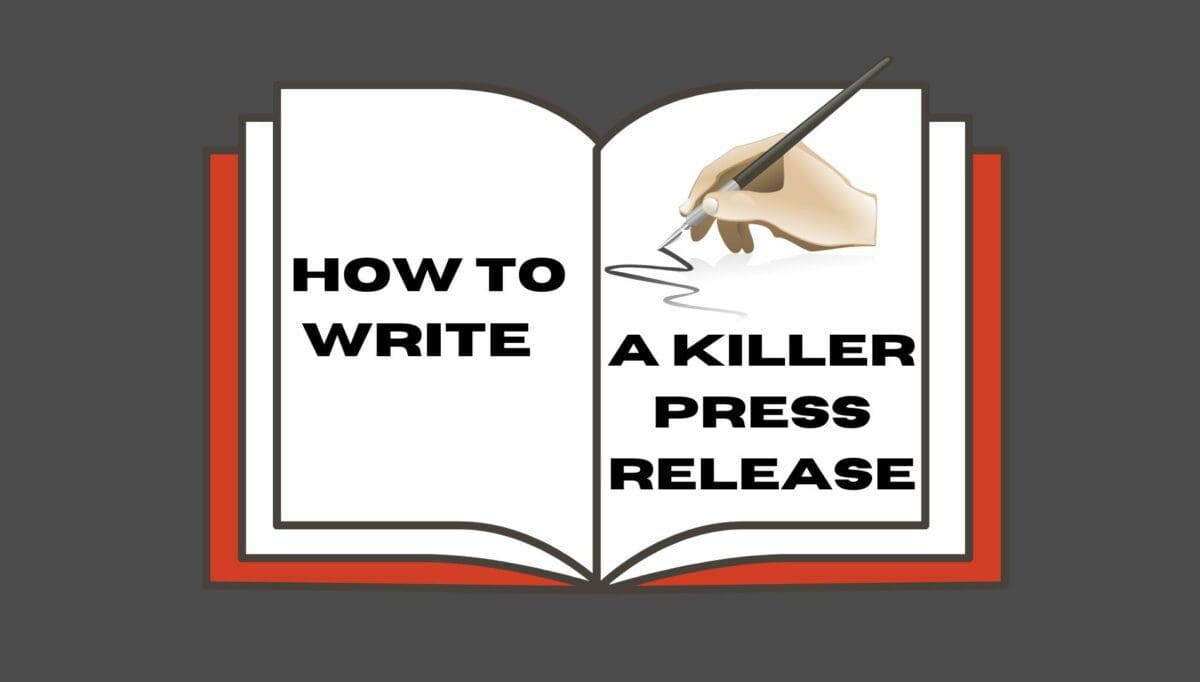By Tamarin Fountain
Do you feel like you’re all over the place in the music when you perform a song? Perhaps you struggle to keep up or find yourself ahead of your backing musicians?
It could be that you need to learn how to improve timing when singing. But how do singers improve their timing? Some are born with a natural aptitude? Others must practice using specific exercises, learn to read music or use a metronome to improve their skills.
Read on to find out how you can be perfectly on the beat, master offbeats and develop a great sense of rhythm, to up your vocal game.
How to improve timing when singing
Every singer will have issues with musical timing at some point in their career. Tricky backing tracks, poor feedback in an earpiece or simply not paying attention properly, can cause confusion and slip-ups. However, if you frequently find yourself off the beat, too fast, too slow or somehow out of sync with everyone else, you may have a problem. The good news is that this issue is definitely fixable, with some help.
How to sing in time – and fast
A simple shortcut to learning how to sing a song in time is to copy a good singer’s cover of it. Bear in mind they may play around with the timing and not perform it as strictly as it’s written. But if it’s a studio recording and they’re a big name, chances are they will keep with the confines of the time signature. Beware of live recordings though. Artists are much more likely to mess around with the timing on stage and in front of an audience, so you may find these to be more misleading.
But this is just a quick fix. As an emerging vocalist, it’s really important you get to grips with timing, whether working on it by yourself at home, or with a singing teacher.
Singing timing problems
So what singing timing problems might you have? Here are the main problems you’ll encounter.
- Singing off the beat
- Poor rhythm
- Coming in at the wrong moment
- Holding the notes too long/not long enough
- Struggling with irregularities such as intentional offbeats and syncopation (this is where the stress is placed on the weaker beats)
Some singers have an innate talent for timing and are able to bring some artistic licence into a song to great effect. But if this isn’t you, a little technical know-how will do wonders. If you’re unsure whether you’re guilty of poor timing, a good way to find out is by recording yourself and listening back. This is a wise habit to adopt in any case. Being able to critique yourself as objectively as possible will help you to improve, and it’s so much easier to do via a recording, than in the moment during a performance.
How to use a metronome for singing
The metronome is an age-old bit of kit that beats the time of the song for you. 4/4 time is a very common musical pace. You simply set the metronome to this – or the relevant time signature – and then follow its pace. Metronomes are now available as apps, digital gadgets, or an old-fashioned ticking device. Some keyboards have a metronome function built-in. Or you can use a drumbeat set to the correct timing.
Remember that everyone learns differently and may not respond to the same method as well. Metronomes don’t help everyone. So don’t despair if you’re finding it makes the problem worse than better. There are other things you can try.
How do singers improve their timing?
Some singers purposely change up the timing of a song or play with the rhythm. But if you want to do this, you’ll need to know the rules before you break them, otherwise, you can end up with a musically chaotic result. As with any aspect of singing, YouTube tutorials are a super way to solve problems and get better as a vocalist.
Another way to get better at timing is to join a singing group. It’ll soon become obvious if you’re behind or ahead of the beat or if you come in too soon. Similarly, taking music theory lessons, taking up an instrument, or doing musical grades will all benefit you.
Singing offbeat
Understanding song structure and learning how to read music will help with timing if you find yourself singing offbeat. If you can see the length of the notes, the pace of the tune and are able to count yourself in, you are far less likely to have issues around timing. You should also be able to differentiate between a verse, chorus, bridge and breakdown as these will all cause variance in timing. Reading music is a valuable skill for a singer in any case, especially if you plan to become a professional. Not all music is written evenly. Writers and composers will often include intentional offbeats and syncopation. So don’t be too literal with your metronome or tapping. This will keep you in the right time signature, but you should also pay attention to the notes, to follow any interesting irregularities.
How to stay on the beat when singing
Once you’ve gained a thorough understanding of song structure and basic sight-reading (this means being able to read music on sight), you will be able to count the beats. You might like to do this by tapping your foot, clapping your hands, marching around your living room or speaking through the lyrics in time. Where you have a note that is long, you might like to add an ‘and’ – one and, two and, three and four and. You can speak the numbers fast or slow to match the length of note (crotchet, minim etc).
Do this before you try to sing the song, so you have the beat imprinted ahead of becoming distracted by your vocal quality. This should also precede any work on the interpretation of the song. Get the basics down first.
Once you’re ready to start singing, make sure you have a backing track that matches up to the sheet music. If you have competent musicians it won’t be a problem as they can play as it is written. However backing tracks – in particular karaoke tracks – are notorious for adding complex arrangements that are invariably mismatched to the music. Orchestral arrangements and instrumental versions of songs will too frequently add or remove sections. While this shouldn’t affect you being on the beat so much, it will make an enormous difference as to where you come in. It also explains why decent singers can come across as terrible at karaoke nights! A singer who is all over the place in terms of timing can be funny, but if that’s not what you’re aiming for, learn the idiosyncrasies of the specific track first.
How to improve rhythm and timing
Rhythm can be part of your timing. However, it is possible to have a good sense of rhythm but poor timing, or vice versa. You’ll need to master both. Some genres have particularly complex and challenging rhythms that may confuse the beginner. Jazz is a great example of this and is a genre often borrowed from by mainstream pop artists including John Legend, Amy Winehouse and Joss Stone.
Adding in some percussion forces you to learn rhythm and timing, so can be a useful technique to adopt. While most vocalists favor a guitar or piano, there have been some notable singers such as Karen Carpenter (of legendary 1970s brother-sister duo The Carpenters), who sang lead vocals while playing the drums.
There are plenty of online tutorials available for drumming, or you can take a look at our article with advice on how to sing and use a stompbox.
How to sing in the correct rhythm
Here are some questions to ask of the song if you want to get to grips with the rhythm.
- What is the time signature?
- How many beats per minute does the song have? (Many genres will have a standard)
- Where do the lyrics fall on each of these beats? (Notate it syllable by syllable to ensure you’re landing each part of the word on the correlating beat)
- What is the tempo?
- Where are the rests?
- What genre is the song? (certain genres will have particular rhythms attached).
Mastering rhythm – rhythm exercises
Feeling a rhythm is an instinctive way to do it. But this is a skill that comes with experience. Practicing with some rhythm exercises will gradually increase this musical intuition. You should also listen to as much music as you can – across all genres – so you subconsciously soak in the different rhythmic styles.
Here’s a fun rhythm warm-up you may like to try. It can be adapted to be as easy or as challenging as your ability allows. Although it’s well worth making it harder for yourself as you become more accomplished.
- Sing up a scale using the numbers one to eight for each note. Then, repeat number eight on the same note work back down the scale. So – 1,2,3,4,5,6,7,8, 8,7,6,5,4,3,2,1.
- Next, repeat the whole scale up and down, but this time add in a rest where the two should be on the way up and down. Be sure to keep to the same timing, just leave an equivalent gap where the two is. So 1, – , 3, 4, 5, 6,7,8,8,7,6,5,4,3,-,1. This creates a sense of syncopation.
- Repeat again, but this time, rest in the place of both the two and the six.
- Now repeat again, but put a rest in the place of the two, four, six and eight.
- This can be increased and played around with, to keep you on your toes! Try variations such as resting on two notes in a row. If you struggle with the simple rest, you can add in a clap to fill the silence, or use the rest to grab an inhale.
This exercise will also heighten your concentration and fire up the brain. As such it is often used by actors to ready themselves for a performance. And you’ll be knocking out a few scales in the process, getting the voice gentled oiled ready for action.
It can be even more tricky if it’s another singer who’s causing the issue and you’re trying to sing or play with a vocalist who isn’t keeping correct time. If this is the case, you can subtly nudge them into the correct beat, by tapping the time signature. And it’s not only singers and instrumentalists who need to learn how to improve timing when singing. It’s every bit as vital to rappers and grime artists, even where lyrics are spoken. Whatever your musical style, great timing will earn you a strong reputation and ensure you’re even more in demand as a singer.
Related Questions
How many hours should a singer practice?
Most professional singers practice, rehearse and perform all day every day or most of the night. If you’re trying to improve your vocals and are working toward becoming an artist, aim for at least 30 minutes of practice a day. Once you’re more advanced, this should extend into at least an hour.
Can rhythm be taught?
Yes. Some people have natural rhythm. Many pick it up at a young age from musical families, or with a great deal of exposure to music in their formative years (the younger they are the better). Others have to learn rhythm more formally and as teens or adults, which is tougher, but very possible.
How do I make my singing voice better in the morning?
Warming up is key. If you try to sing on a cold voice, you’re more likely to do some damage and will most probably sound groggy. Get into a routine of gentle humming exercises, followed by some scales and tongue twisters. Drinking warm water with a squeeze of fresh lemon is a good wake-me-up method too.
Have you had issues with rhythm or singing off-beat in the past? If so, what have you done to improve your timing? Let us know and share before and after videos of you singing in the comments below.










